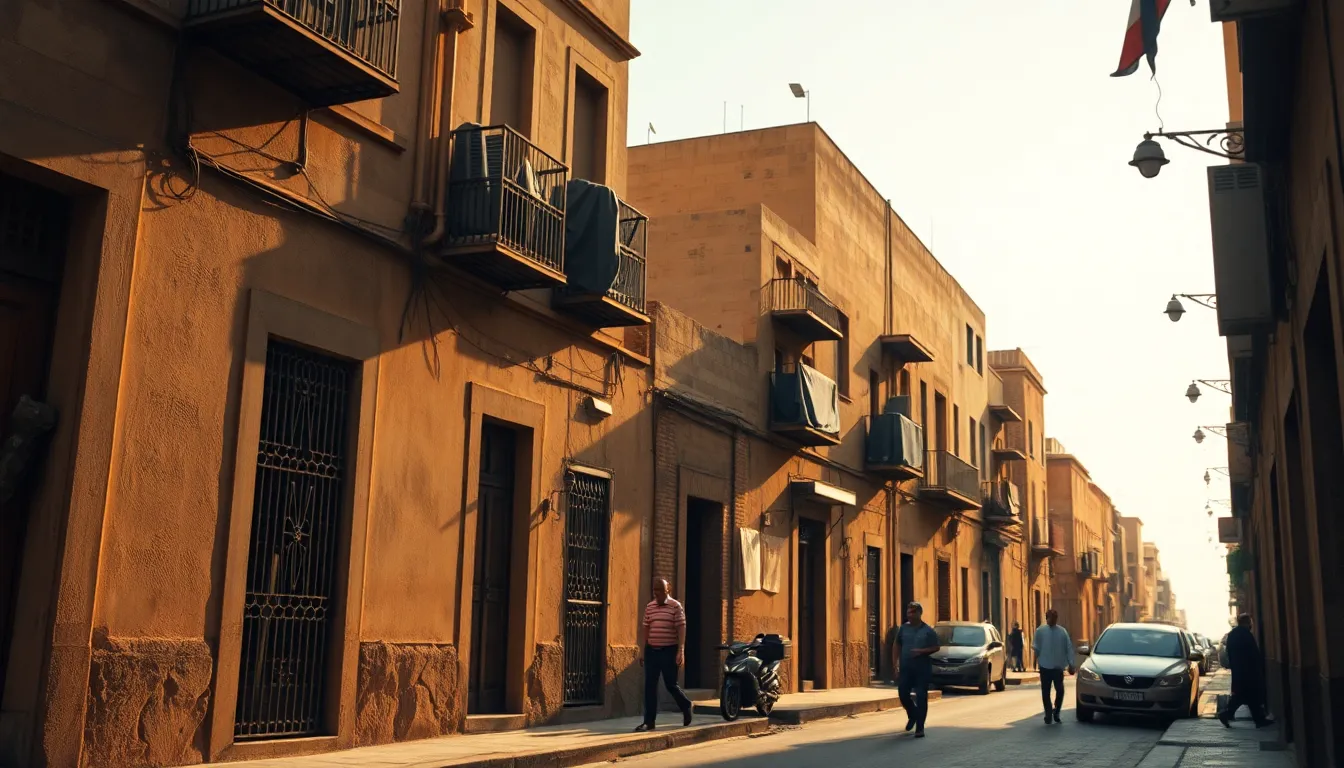Architectural Wonders of Giza Unveiled
Join us for a free walking tour through Giza's iconic architectural landmarks, where ancient history meets stunning craftsmanship. Explore the timeless beauty!
Time
3 Hours
Stops
5 Places
Distance
2.0 km
The Great Pyramid of Giza
Begin your tour with the architectural marvel of the Great Pyramid, an enduring symbol of ancient Egyptian ingenuity and the last of the Seven Wonders of the Ancient World.

The Great Pyramid of Giza (Source: Google Maps)
The Great Pyramid of Giza, built around 2580–2560 BC, is the largest of the three pyramids on the Giza plateau and the oldest of the Seven Wonders of the Ancient World. Commissioned by Pharaoh Khufu, it originally stood at 146.6 meters and was constructed using approximately 2.3 million blocks of stone, showcasing the advanced engineering skills of ancient Egyptians. The pyramid was originally encased in highly polished Tura limestone, reflecting sunlight and making it shine like a jewel. It served as a tomb for Khufu and was part of a complex of structures designed to honor the pharaoh in the afterlife. The Great Pyramid is a testament to the architectural and mathematical prowess of its builders, including precise alignments with the cardinal points and intricate internal passageways that have fascinated historians and archaeologists for centuries.
Pyramid of Khafre
Just a short walk from the Great Pyramid, the Pyramid of Khafre is notable for its preservation and the remnants of its original casing stones at the apex.

Pyramid of Khafre (Source: Google Maps)
The Pyramid of Khafre, built for Pharaoh Khafre, is the second-largest pyramid at Giza and stands at a height of 136.4 meters. It is unique for retaining some of its original casing stones at the apex, providing insight into the pyramid's original appearance. Constructed around 2570 BC, Khafre's pyramid was part of a larger complex that included the Great Sphinx and the Valley Temple. The Sphinx, with its lion's body and human head, is believed to represent Khafre himself, symbolizing strength and wisdom. The pyramid's design features a complex system of chambers and passageways, demonstrating the architectural sophistication of the time. Khafre's pyramid, though slightly shorter than Khufu's, appears taller due to its elevated location on the Giza plateau. It reflects the transition in pyramid construction techniques and serves as a significant landmark in ancient Egyptian history.
The Sphinx
Conclude the first hour of your tour with a visit to the iconic Sphinx, a magnificent limestone statue with the body of a lion and the head of a pharaoh, showcasing ancient Egyptian artistry and symbolism.

The Sphinx (Source: Google Maps)
The Great Sphinx of Giza is one of the most recognizable monuments in the world, dating back to the reign of Pharaoh Khafre around 2500 BC. Carved from limestone, the Sphinx has the body of a lion and the head of a human, believed to represent Khafre himself. Standing at 20 meters high and 73 meters long, it is the largest monolith statue in the world. The Sphinx was originally painted in vibrant colors and may have had a ceremonial purpose, guarding the pyramids and symbolizing strength and wisdom. Over the centuries, it has suffered from erosion and vandalism, but restoration efforts have helped preserve this iconic structure. The Sphinx's alignment with the rising sun during the equinoxes showcases the ancient Egyptians' understanding of astronomy and their architectural prowess. Today, it continues to captivate visitors, serving as a symbol of ancient Egyptian civilization.
Valley Temple of Khafre
Explore the Valley Temple of Khafre, an architectural masterpiece featuring massive limestone blocks and an insight into ancient Egyptian mortuary practices.

Valley Temple of Khafre (Source: Google Maps)
The Valley Temple of Khafre is an ancient Egyptian mortuary temple located near the Great Sphinx and the Pyramid of Khafre. Constructed from massive limestone blocks, this temple served as a place for the mummification and purification of the Pharaoh's body before burial. The temple's design features intricate carvings and reliefs depicting Khafre in various forms, emphasizing his divinity and connection to the gods. The Valley Temple is connected to the Pyramid of Khafre by a causeway, which was used for ceremonial purposes. Its architecture reflects the grandeur of ancient Egyptian building techniques, showcasing the use of massive stones and precise craftsmanship. The temple also housed statues of Khafre, which were intended to provide a physical manifestation of the pharaoh in the afterlife. The Valley Temple is a vital part of the Giza pyramid complex, shedding light on the funerary practices and beliefs of ancient Egyptians.
El Hadaba Restaurant
Pause for a traditional Egyptian meal at El Hadaba Restaurant, conveniently located near the pyramids, offering authentic dishes in a setting that reflects local culture.

El Hadaba Restaurant (Source: Google Maps)

Your travels, your rules.
Create your own Free Walking Tours.
Set your preferences, distances and anything you want to do or see.
Completely free, no payment required.